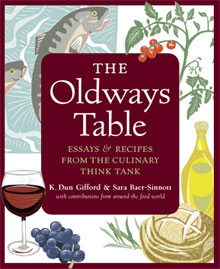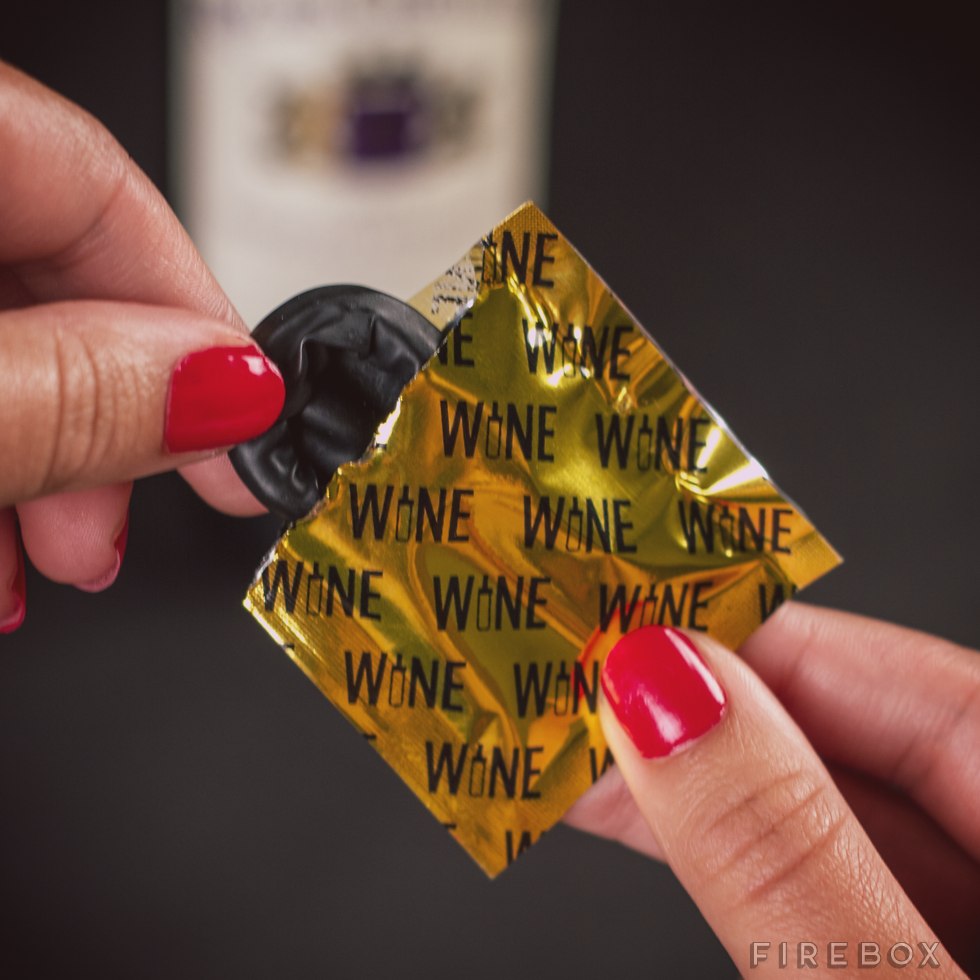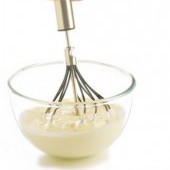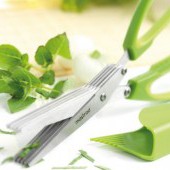Bonnie: As you know by now, our government’s dietary guidelines suggest we eat at least three servings of whole grains each day.
But what are whole grains and how do you identify them?
A whole grain is simply the seed of a plant that’s a grain—just the way it grew in the field—with its three main parts intact: the endosperm, germ and bran. Each part contains its own nutrients, but the whole grain—even when ground up—is greater than the sum of its parts, providing vitamins, minerals and many phytonutrients—substances plants produce to protect themselves against disease, ones that also help us.
Whole grains are good for you. In fact, scientists agree that eating whole grains regularly reduces the risk of heart disease, some cancers, and type 2 diabetes; and that their fiber helps with both regularity—as grandma used to call it—and your weight because it makes you feel full. Whole grains, though, are not always a good fiber source (the amount varies with the grain).
Whole grains are both “stand-alone” foods like oatmeal, brown rice, corn and popcorn, and an ingredient in breads, pastas, crackers and cereal.
“No one is against whole grains,” said K. Dun Gifford, President of Oldways Preservation Trust, a nonprofit food issues advocacy group. But “consumers didn’t know how to find them.”
That consumer confusion led Dun to spearhead the formation of the Whole Grains Council—a partnership of 170 food companies, scientists and chefs—that created the black and gold Whole Grain Stamp that now adorns over 1400 products. The stamp indicates whether the product is an excellent source (containing at least 16 grams or one whole grain serving) or a good source (containing 8 grams or a half serving).
It’s difficult to determine the quantity of whole grains without Oldway’s whole grain stamp or some other whole grain seal. You can, though, determine whether or not something contains whole grains by reading the ingredients list on the label.
- Look for the word “whole” in front of the grain.
- Select foods whose first ingredient is a whole grain. (Ingredients are listed in descending weight order.)
- Don’t judge bread by color; manufacturers often add caramel coloring or molasses to make bread appear brown.
- Descriptions like stone-ground, multi-grain, or bran don’t indicate a whole-grain product; check the ingredients.
- “Wheat” or “100% wheat” means wheat is used, not whole wheat.
- Look for the whole grain health claim, allowable only if the product contains at least 51 percent whole grains by weight.
Try to make half your grain servings whole — grain that is. How much is a serving? Half a bagel, one slice bread, 1 cup dry cereal, 2 cups popcorn or half cup cooked rice, pasta or cereal. Start by making simple switches, changing from white to brown rice, regular to whole-wheat pasta, white to whole-grain breads or making a two-tone sandwich—one slice whole-wheat, one slice white bread.
And here are some whole-grain recipes for you to try, adapted from The Oldways Table with essays and recipes compiled by Dun and Sara Baer-Sinnott.
Quinoa and Orange Salad (based on one by Elisabeth Luard) Cook 1 pound quinoa according to package directions. Combine the warm quinoa, 1 diced cucumber or chayote, 6 minced scallions, 1/4 c minced parsley, 1/4 c minced mint, zest and segments from a fresh orange, 2 seeded and chopped jalapeños, 6 T olive oil, 2 T lemon or orange juice and sea salt to taste in a large bowl. Taste and adjust seasoning. Serve warm or cold. Makes 4 to 6 servings.
Rice and Lentil Salad (based on one by Ellen Eckler Ogden) Cook 1 c brown or wild rice blend and 1 c French lentils separately according to package directions. Whisk together 1/2 c extra-virgin olive oil, 1/4 c lemon juice and 1/4 c red wine vinegar for a vinaigrette dressing. Stir in 2 minced garlic cloves. Combine the cooked rice, cooked lentils, the dressing, 6 coarsely chopped scallions, and 2 c diced tomatoes in a bowl. Refrigerate. When ready to serve toss with 1 c crumbled goat or feta cheese and 2 c chopped fresh arugula. Makes 6 to 8 servings.
Bulgur Pilaf with Toasted Noodles (based on one by Paula Wolfert) Cook 1/2 c broken vermicelli in 3 T butter in a saucepan, stirring often, until golden—about 5 minutes. Stir in 1 t salt and 1 c coarse-grain bulgur. Add 1 1/2 c boiling chicken broth and let boil 3 minutes; reduce heat, cover and let simmer 10 minutes or until all the liquid’s absorbed. Place a double layer of paper towels on the grains, recover, remove from heat and let stand 10 minutes. Heat 1 T butter, add 1/2 t freshly ground black pepper and let sizzle. Pour over bulgur mixture and serve. Makes 4 servings.
Bryan: Eating healthy is not a mysterious process, though many people seem bewildered by the array of choices facing them in supermarket aisles. I’ve said this before, but I’ll say it again. Average Americans eat terribly. Here is something you can do every day to make your diet and health that much better: eat whole grains. The Whole Grains Council has made it much easier to do by labeling whole-grain products with an easily identifiable mark… look for it and stop consuming bleached and processed food products. A good diet does not need to be an ordeal; simply replace many of the products you already consume with healthier versions. Do it today; feel better tomorrow.
Eric: It is hard for our family to look at a whole-grain stamp and think “Why wouldn’t consumers want this on their products?” My brother and I grew up under the watchful eye of a nutritionist; our attempt at eating less than healthfully came in the form of Honey Nut Cheerios (which, by the way, is a decent source of fiber and recommended by the American Heart Association). Anyway, we were always taught to recognize the effect of the foods we put into our bodies and to have an understanding of nutritional labels. I look at the state of health of the United States, and the growing rate of obesity among children, and think to myself that in the case of nutrition, ignorance is not bliss. Whole grains should be recognized as an important part of our daily diet, and we should be thankful that some companies (under the guidance of the Whole Grains Council) are producing healthy alternatives to the white breads and blue box mac & cheeses that we as a society are so used to eating. As my brother pointed out, eat it today; feel better tomorrow. The perfect start to feeling healthy is not just exercise; it is recognizing the nutrition you put into your body. Think of it as spending a few extra cents for the super-unleaded gas that will make your car perform, rather than pumping in the generally accepted unleaded gas that can ruin your car’s performance. Enjoy your cereal….







Thanks for such a thorough explanation of whole grains and the stamp. Much appreciated. I find the bread aisle at the supermarket very confusing when I’m looking at the large variety of “grain” breads out there.
NICE, Bonnie. Everyone in the Whole Grains Council appreciates this extra exposure and explanation. Sorry we won’t be attending the Whole Grains Conference this year–just can’t get away at that time, but we’ll be thinking of you all. It was a great opportunity last year, and maybe next time…meantime, keep up the GREAT work on Bite of the Best!
Regards,
Joan Rubschlager
WOW a really good tip. Something I did not know but will look for from now on–Thanks
We would like to speak to someone about doing a mini profile on the Whole Grain Stamped products that either come to the Canadian Grocery retail stores from the US or are already here that are sold in our retail marketplace.
John, Canada has its own bilingual version of the Whole Grain Stamp, which started appearing on shelves in April. First products to use it were ACE Bakery breads and Ryza brown rice milk, with more coming every week. Visit our website at WholeGrainsCouncil.org and contact me (details under Contact) and I’ll tell you more. Within the next few weeks visitors to the WGC website will be able to specify that they want to see just the Canadian products, in our Product Finder lists.
[…] one, there’s the Whole Grain Stamp on many food packages indicating that the food contains at least a half serving of whole grains — […]
[…] help celebrate Whole Grains Month this September. Two years ago, during September we featured the whole grain stamp as our FeaturedBite. Since then food manufacturers are making more whole grains products, making it […]
[…] identify products with significant amounts of whole grains, look for the Whole Grain Stamp on the label. That stamp on Barilla Whole Grain pasta — made from 51 percent whole wheat — […]
Maybe you should edit the post subject Whole Grain Stamp | Bite of the Best to something more catching for your blog post you write. I loved the post however.
hi to all at http://www.biteofthebest.com i thought i had sent this newyears eve but it didnt send so i have sent it again happy new year to every one
– gentas
I do not know if it’s just me or if perhaps everyone
else experiencing issues with your site. It appears as if some of the
text in your posts are running off the screen. Can someone else please comment and let
me know if this is happening to them too? This could be a problem
with my internet browser because I’ve had this happen previously.
Thanks
It’s your browser. Restart the program, and if that doesn’t work try restarting the computer.